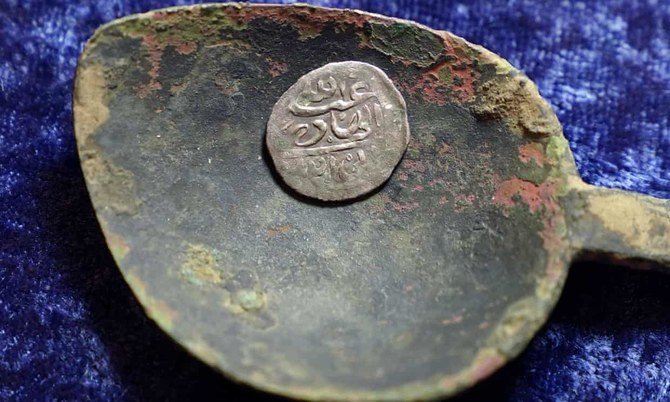LONDON: Ancient coins unearthed in a New England orchard have given historians a clue as to the fate of one of history’s most heinous, and until now mysterious, pirates.
Amateur historian Jim Bailey discovered a series of ancient Arabian coins while metal detecting in a pick-your-own orchard in Rhode Island in the US.
Their provenance has shed light on how a man who was once the world’s most wanted criminal disappeared into thin air.
The coins, the oldest ever found in North America, reveal the previously unknown story of Capt. Henry Every.
In 1695, he made a name for himself when he and his crew ransacked wealthy Indian pilgrims, returning home from Makkah, aboard a ship owned by one of the world’s wealthiest men.
They killed the men, raped the women and made off to the Bahamas with tens of millions of dollars’ worth of gold and silver coins.
They quickly became the world’s most wanted pirates, with even England’s King William III placing a huge bounty on their heads. “Everybody was looking for these guys,” said Bailey.
Until now it was known that they landed in Ireland at one point, but from there the trail went cold. Bailey’s discovery is evidence that they ultimately landed in the US.
The Arabic text on the coins that Bailey found was the first clue as to the importance of his discovery.
Research confirmed that the coins were minted in 1693 in Yemen, and since his first discovery in 2014 many more have been found.
“It seems like some of (Every’s) crew were able to settle in New England and integrate,” said Sarah Sportman, the state archaeologist for Connecticut, where one of the coins was found in 2018 in the ongoing excavation of a 17th-century farm site. “It was almost like a money-laundering scheme.”
Records show that the crew posed as slave traders — even purchasing four dozen slaves in French colonies to look the part, Sportman said — before reaching their final destination of the American colonies.
By posing as a slave trader — then a booming new profession in New England — one of the world’s most brutal pirates was able to hide in plain sight.






















